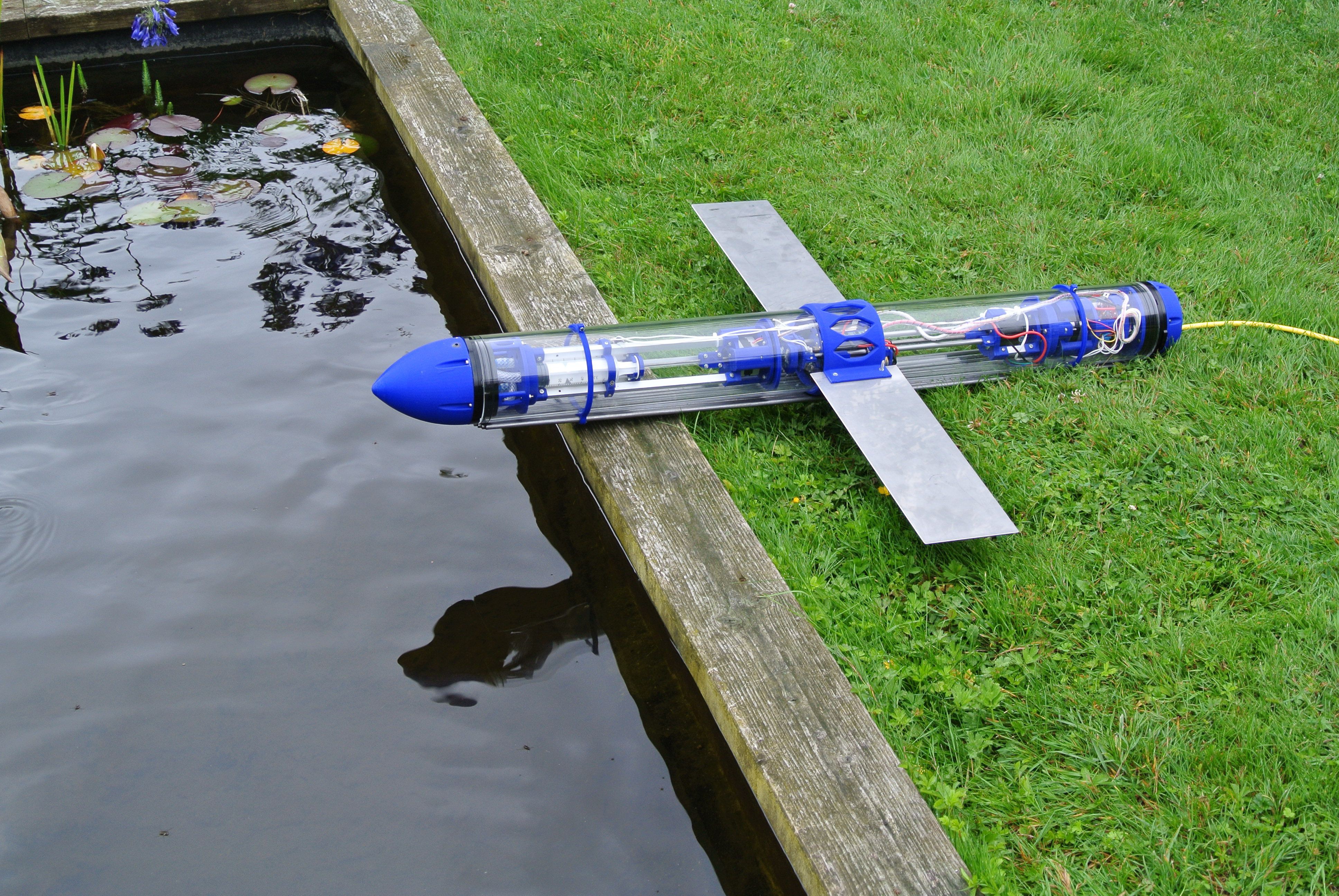As the design is at a stage where it is watertight and all motor controls are working, we were able to test the glider underwater.
The first clip is of the glider ascending as the buoyancy engine expelling water. The air bubbles released at the start is air coming out of the nosecone as it fills with water. The second clip is an underwater view of the glider as it descends by taking water into the buoyancy engine.
During underwater shot, you can see my fingers nudge the glider downwards slightly, this is only to prevent the nosecone from breaking the surface of the water as the nosecone will take in a small amount of air which will become trapped and prevent the glider from descending.


We need a larger (and deeper) volume of water in order to trim the glider properly and to test forward motion.
I intend for the third version of the glider to be documented to a greater depth so you can print and assemble the glider. You can produce the first generation of the glider using the information/files I have provided on Hackaday, and in order to produce the second generation, you can obtain the STL files from the development dropbox folder.
 alexw
alexw
Discussions
Become a Hackaday.io Member
Create an account to leave a comment. Already have an account? Log In.
Thanks for the update Alex, it looks great in the water! I think the 4" tube was a good way to go. I'm excited for the V3 designs so I can start printing my own.
Are you sure? yes | no
That's great to hear, I should have the third version design completed within a few weeks :-)
I was going to purchase an autopilot using the money I recieved from the third round, would you still recommend the Pixhawk 2.1 or would the cheaper pixhawk 2/original pixhawk (or any other autopilot) potentially be a better option?
Are you sure? yes | no
I'd go with the Pixhawk 2.1. The community is moving towards the JST-GH connectors and away from the older DF-13's that were found on the Pixhawk 1 and all the clones. That alone makes it worth it. After that, it is pretty much the same for your purposes. If you ever go to two battery banks, you can monitor those independently with the 2.1.
However, if you decide to go for a Pixhawk 1 type, forget the clones and get the one from mRobotics, that is considered the genuine one now and Jordi has updated the hardware to keep it current and fix the 1MB RAM limit that the older 3DR ones had.
Are you sure? yes | no